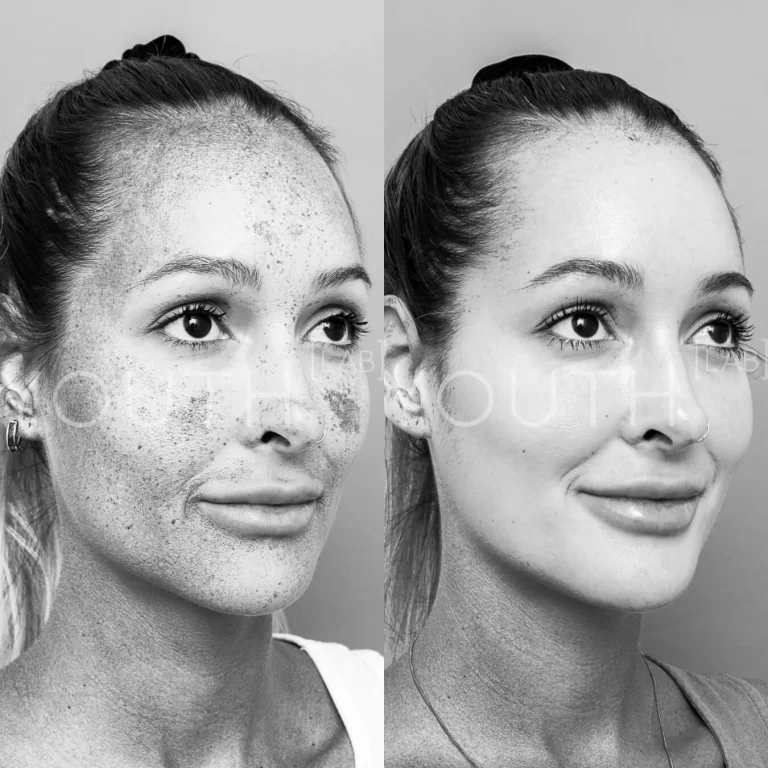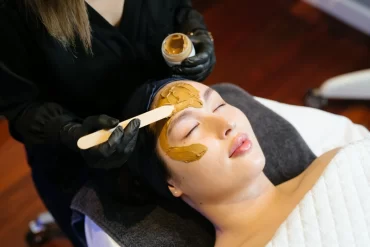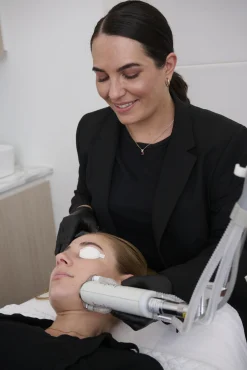Pigmentation

Pigmentation concerns include freckles, sun spots, age spots or larger patches of uneven tone.
Pigmentation refers to the natural variations in skin colour. For some people, this may appear as freckles, sun spots or age spots, while for others it can present as larger patches of uneven tone. These changes can be influenced by many factors including sun exposure, hormones, trauma to the skin, and genetics.
Within the skin are special cells called melanocytes. These produce melanin – the pigment that gives our skin its colour. Everyone has roughly the same number of melanocytes, but the amount of melanin they produce determines how light or dark the skin appears.
Sometimes, melanin production becomes uneven, which can result in areas of darker or lighter skin.
In accordance with Therapeutic Goods Administration (TGA) regulations, we are unable to provide detailed information about specific treatments online. Such information may be misinterpreted as the promotion of prescription-only (Schedule 4) medications – this is not permitted under TGA guidelines.
For this reason, a consultation with one of our practitioners is required. During your comprehensive consultation, your practitioner will carefully assess your skin, discuss your concerns, and provide education around suitable treatment options. A personalised treatment plan will then be created to address your individual needs.
Treatment costs will vary depending on your tailored plan and will be discussed with you in detail during your consultation.
FAQs
What are some common types of pigmentation?
Freckles – small brown spots, often genetic but triggered by sunlight.
Sun spots or solar lentigos – areas of darkened skin linked to long-term sun exposure.
Diffuse sun damage – patchy irregularities from ongoing UV exposure.
Age spots – darker spots that often appear later in life.
Melasma – areas of pigmentation influenced by hormones, genetics, and UV exposure.
Post-inflammatory pigmentation – colour changes that can occur after acne, injury or inflammation.
Hypopigmentation – areas of lighter skin when melanin production is reduced.
What are some of the common causes of pigmentation?
Sun exposure – UV rays stimulate melanin production, which can result in uneven pigmentation and other visible changes in the skin.
Hormones – pregnancy, breastfeeding or certain medications can trigger changes in melanin activity.
Trauma or injury – skin injury or inflammation may result in post-inflammatory pigmentation.
Genetics – family history can influence how the skin responds to environmental triggers.
Can pigmentation be prevented?
While not all pigmentation can be avoided, there are steps that can help reduce its appearance or prevent it from worsening:
Daily use of a broad spectrum SPF 50+
Wearing protective clothing and seeking shade during peak UV hours
Avoiding tanning and solarium use
Using gentle, supportive skincare to maintain barrier health
What are our recommended treatments?
Please note that the below recommended treatments are a reference point and full treatment recommendations will be made following a consultation.
BBL Corrective
Broadband Light may reduce the appearance of freckles, sun spots and redness.
Halo Laser
Halo Laser can support overall skin texture and tone, and improve visible pigmentation.
Skin Needling
Skin needling stimulates skin renewal and may help reduce the appearance of superficial pigmentation.
Clinical Peels
Chemical peels exfoliate the upper layers of the skin, supporting a clearer and more even appearance.
Hydrafacial
Hydrafacials a multi-step treatment designed to cleanse, exfoliate, and infuse the skin with hydrating and brightening serums.
Please note:
A combination of treatments may be recommended for best results.
Individual outcomes vary depending on skin type, depth of pigmentation and commitment to ongoing care (such as sun protection).
Some pigmentation, such as melasma, is complex and can be recurrent. Long-term management is often required.
In certain cases, referral to a dermatologist may be appropriate for diagnosis and medical management.



